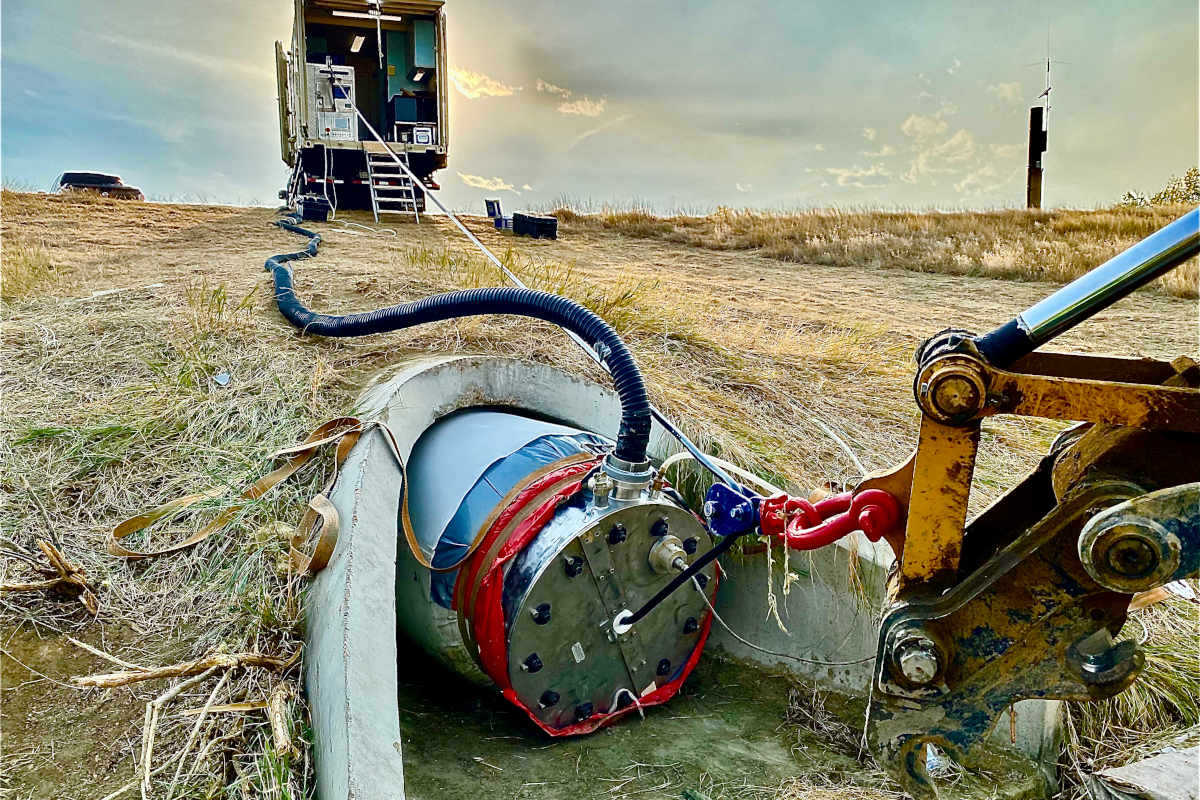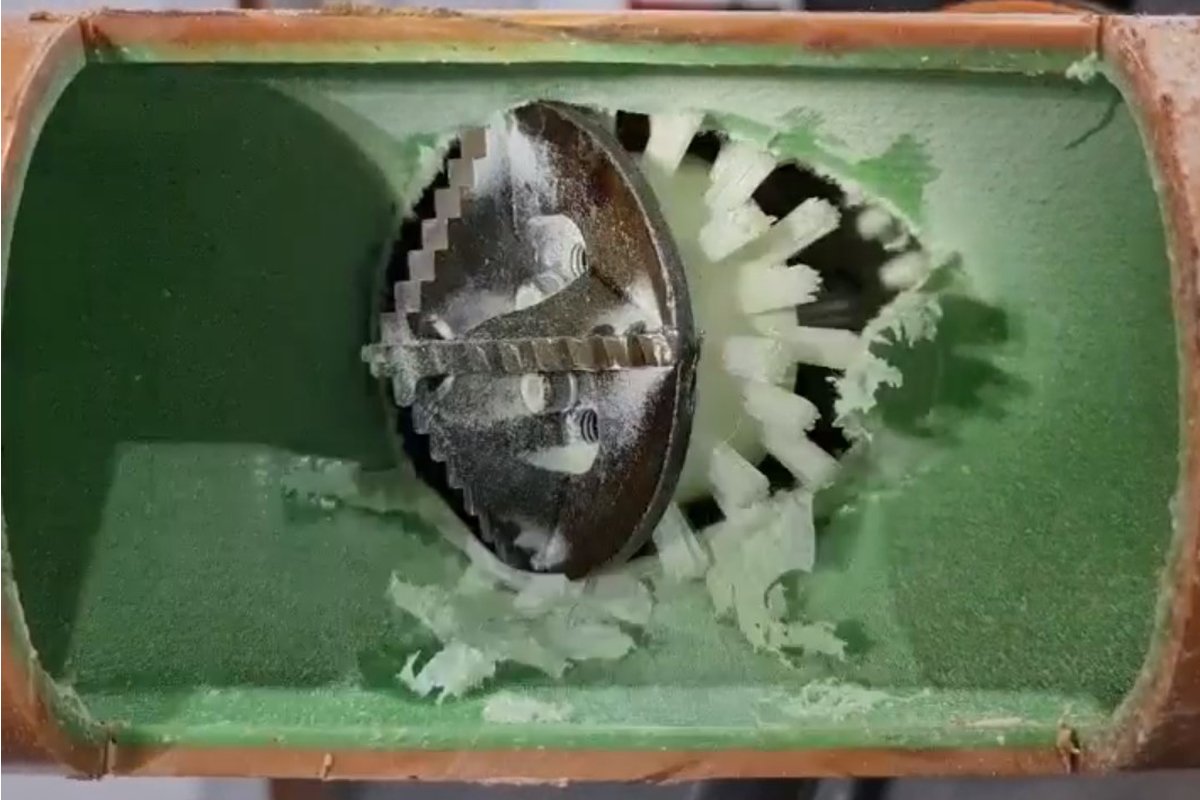
2000 Leaks under the Sea (Er, Lake)
Contractors Unite to Develop New Underwater Solution for Desperate Lake Community
Nestled just outside the metropolitan St. Louis area sits a quiet man-made lake surrounded with beautiful homes and a vibrant lake life. Originally planned as a private weekend resort community in the 1960s, Lake St. Louis grew with the region to attract a current resident population of more than 16,000. Not surprisingly, the nearly eight miles of sewer mains buried under the two man-made lakes had not been maintained nor did anyone know what condition they were in. With no clear means of access to evaluate and repair the pipes and with conventional options both costly and unsightly, the residents searched for a creative alternative to meet their needs. Fortunately, they found a team offering a unique solution that not only provided access to the sewer system, but also saved a significant amount of money while preserving their pristine community.
DESPERATE COMMUNITY
The residents of Lake St. Louis were informed by their Water District that the current subaqueous sewer was deteriorating and possibly leaking raw sewage into the lakes. With no way to access and inspect the miles of lines to confirm the extent of the problem, a solution was proposed to abandon the existing sewers and install lift/pump stations in resident’s back yards to re-route the wastewater. As much as the shock of the original proposed project cost of $40 million to $72 million, the installation of 30-plus lift stations in their beautiful lake community drove the citizens to seek other options. Many residents faced losing their view of the lake, having their property condemned, or all water front access eliminated. “I had just had my morning coffee when I noticed men walking around my yard”, said Ray Schroeder, a longtime Lake St. Louis resident. “They told me that they were going to be installing a pump station on my property and when I asked where it would fit, they mentioned it would be right next to my house.”
Not accepting that fate, the homeowners banded together and took action. They formed an advisory council, conducted research, and found a new and creative approach they hoped would be acceptable to the management of the Water District. The goal was to avert any unsightly construction on resident’s property, rehabilitate the existing system if possible, and eliminate the same situation for future repairs.
CONTRACTORS UNITE
The community’s search eventually led them to a trio of companies that combined their expertise to develop a three phase solution. Interactive Pipe Inspection (IPI), a Tumwater, Washington-based company that specializes in pipe inspections using advanced fiber-optic technology to CCTV long lengths of pipe, was first contracted to perform the initial under-lake pipe inspection of nearly 36,000 lf. For the second and third phases of the project, IPI partnered with Marion Hill Associates (MHA), a New Brighton, Pennsylvania-based commercial diving and marine construction company and SAK Construction (SAK), an O’Fallon, Missouri-based tunneling and pipe rehabilitation contractor, to create the plan. IPI hired several experts, engineers, and consultants to design subaqueous manhole structures, which MHA would construct. SAK, headquartered just miles from Lake St. Louis, joined the team to provide expert consultation, project management, and underwriting as well as pipeline rehabilitation when necessary.
THE CHALLENGE
The Lake Saint Louis Sewer Improvement Program called for the evaluation, upgrade and emergency access for approximately eight miles of sanitary sewer mains buried beneath Lake St. Louis and Lake St. Louise. Since the sewer system runs under the two lakes with no intermediate entry, very little information about the state of the pipe was available at the start of the project. With the pump stations no longer an option, the team of contractors needed a way to locate and gain access to the existing pipe in order to repair it now and in the future. The new design proposal consisted of 16 access manholes across the bottom of the lakes and further inspection of all the main lines, which IPI/MHA/SAK proposed in three phases. After the manhole was installed and the pipe inspected, any section of the pipe that required rehabilitation would be done by SAK using CIPP. Ultimately, this plan was accepted by both the homeowners and the Water District and resulted in only temporary disruption at a fraction of the original cost.

Getting the necessary equipment mobilized on the lake, figuring out the material and fittings of the pipe, and working 10 to 35 ft underwater with pipes buried 8 to 10 in. in the mud with zero visibility is a craft Maron Hill Associates has perfected.
THE EXECUTION
At eight miles in total length, the sewer mains installed in the late 1960s were too long for conventional inspection methods; thus, the location, condition, and pipe material were unknown. Despite having access to the as-built drawings, the exact location of the pipe (which at points was located up to 35 ft under water, and another 10 ft below the bottom of the lake bed) was not reliable. After failed attempts by other companies, Star-Trak out of Kady, Texas was able to successfully locate the pipes with a high level of accuracy and GPS coordinates.
Once the pipeline was located, manholes were introduced at varying intervals for access and to deploy inspection cameras. Conceptually, IPI developed the manhole installation idea, but Marion Hill Associates had the expertise when it came to water, diving, and marine construction. Getting the necessary equipment mobilized on the lake, figuring out the material and fittings of the pipe, and working 10 to 35 ft underwater with pipes buried 8 to 10 in. in the mud with zero visibility is a craft MHA has perfected – all with minimal disturbance to the recreational boating season.
Once the manhole was installed, IPI inspected the pipe and, if needed, SAK used CIPP to repair it. The manholes will allow access to the pipe for inspection, lining, and emergency situations for years to come.
“This is a very unique and challenging project with the sewer located under the two lakes,” stated SAK lead estimator/engineer Tom Qualls. “We were going in blind at the start of this project and the combined experience and expertise of our contractors was crucial to provide the best possible solution for the community.”
The installation of the 16 manholes and CIPP rehab of three segments of pipe under the lake took a combined 24 months to complete. Now, life on the lake in this quiet community has returned to normal and the residents can sleep easy again knowing their sewer lines are in good shape for years to come.




